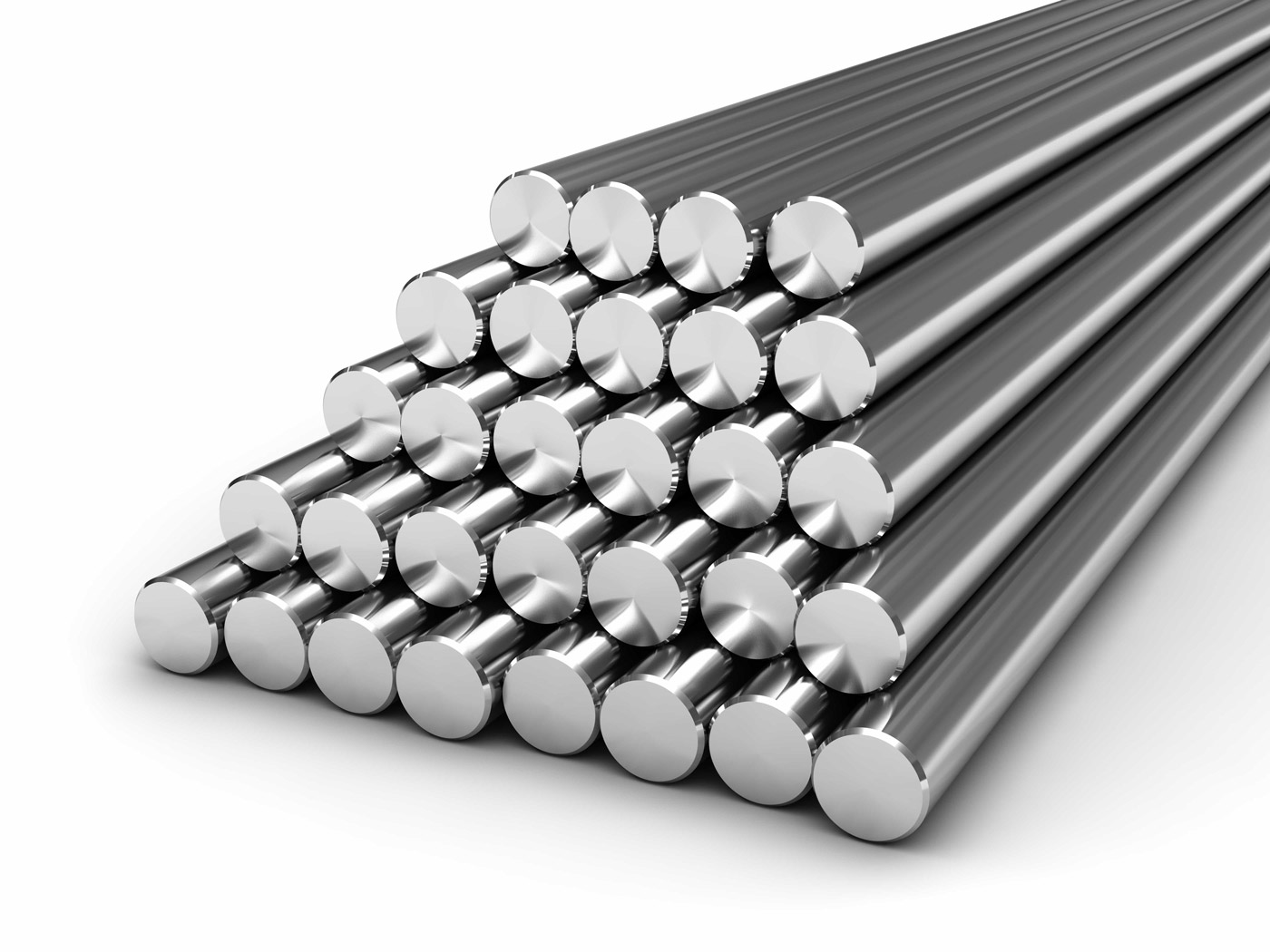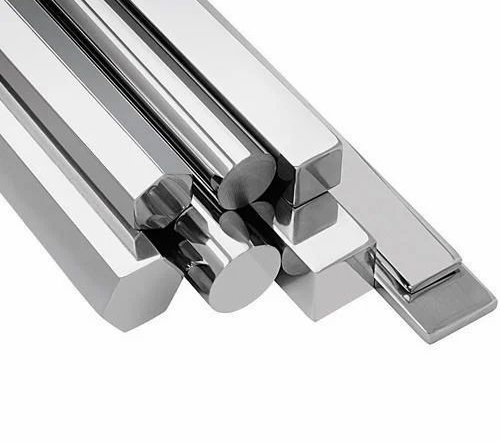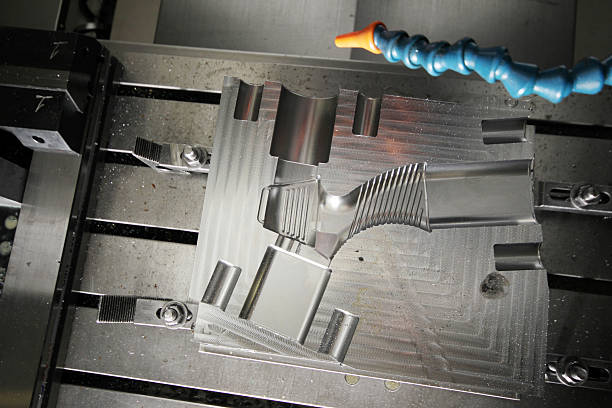Utilizing stainless steel for CNC machining is beneficial yet still has differences from other types of steel. Hence, there are still some precautions and adjustment that needs to be done if you want to use CNC machining stainless steel properly. In this article, we’ll guide you through all of it.
It’s well known that stainless steel is one of the most formidable to be used for CNC machining. Primarily, it’s due to its exceptional durability and homogeneity. The allow also provides us with praiseworthy workability and weldability for precise machining. Moreover, its ductility is also one to be applauded for.
Nowadays, stainless steel has been one of the preeminent choices for industrial alloys, not excluding CNC machining. The exceedingly high tensile strength, coupled with the amazingly high corrosion resistance has made CNC machining stainless steel one that has the best longevity among others.
Several types of stainless steel are commonly used in the market. Here is a brief explanation of them.
|
Type |
Description |
Tensile Strength |
Elongation (%) |
Hardness |
|
SS 17-4PH |
PH stands for precipitation-hardened, which is a still grade that has better corrosion resistance at higher temperatures. However, it achieves this by deducting its mechanical strength. |
150 kpsi |
8 |
33 HRC |
|
SS 303 |
SS 303 is one of the most commonly used CNC machining stainless steel. This stainless steel is a perfect fit for cutting heavy machines like gears and shafts. |
100 kpsi |
40 |
96 HRB |
|
SS 304 |
This one has a good weldability. It has good corrosion resistance and is commonly used for fasteners. It also has a higher strength because of the higher level of carbon in the alloy. |
73 kpsi |
70 |
70 HRB |
|
SS 316 |
The SS 316 has a really good corrosion resistance. It is due to the molybdenum properties inside it. It is also highly formable, weldable, and resistant to chlorides. |
84 kpsi |
50 |
79 HRB |
|
SS 416 |
One of the best candidates for CNC machining available in the market. However, the improved machinability paired with the lower corrosion resistance. |
87 kpsi |
20 |
237 HB |
There are also some upsides and downsides of every stainless steel type as follows:
Here is the upsides and downsides of SS 17-4PH:
High level of toughness, tensile strength, and good corrosion resistance.
SS 17-4PH requires an efficient and careful heat treatment due to its low heat conductivity.

Here are the upsides and downsides of SS 303:
SS 303 has excellent machinability, high-level corrosion resistance, and moderate cost to maintain.
However, this type of stainless steel cannot be hardened by heat treatment. Hence, this cannot be used for marine applications.
Here are the upsides and downsides of SS 304:
SS 304 has good machinability, weldability, and cost efficiency. Furthermore, it has an excellent corrosion resistance.
This type of stainless steel is susceptible to stress, and corrosion cracking in applications above 60 degrees Celsius.

Here are the upsides and downsides of SS 316:
Stainless steel 31 has really good corrosion resistance. Furthermore, it is highly formable and weldable.
However, the downside of this type of stainless steel is that it’s easier to dent or scratch than other types of stainless steel.
Here are the upsides and downsides of SS 416:
Last but not least, SS 416 has an outstanding machinability. However, this one only has moderate corrosion resistance and good enough strength.
The downside of this type of stainless steel is that it is not suitable for chlorine or marine environments. Also, SS 416 has poor weldability and limited capability to work on.
There are several upsides of CNC machining stainless steel. However, here are some of the plausible ones.
Stainless steel is also known for its exceptional corrosion resistance, making it immune to water stains and rust. Therefore, stainless steel can be the plethora of both outdoor and indoor applications for CNC machining, not excluding extreme temperatures and pressurized environments. This is made possible because of the chromium contained within, which enabled the stainless steel to have no contact whatsoever with oxygen.
It’s commonly known that stainless steel also has higher strength than any other type of steel such as mild steel, brass, and aluminum. It has a really high mechanical strength and tensile strength that can be enhanced further using heat treatments. These properties are why stainless steel CNC machining, which undergoes a lot of bending and rolling is an excellent choice.
Stainless still looks clean and neat, that’s no debate. Moreover, the silver / white color obtained from the combination of high quantity chromium doesn’t dissipate, discolor, or rust over time, letting it keep its sleek look over time. Some of the appliances that we see daily use this metal for the same reason. Hence, a CNC machining stainless steel will have a clean and sleek look even after a long time without sacrificing any of its functions of practicality.

There’s nothing perfect in this world, that includes the CNC machining stainless steel. There will still be some challenges involved in using this type of metal machinery. Here is the list.
One of the challenges of having a CNC machining stainless steel is that it’s prone to hardening. As a result, using this stainless steel CNC machining needs additional additional tools and machinery.
One of the biggest problems or challenges of using CNC machining stainless steel is that it can overheat easily. This happens because stainless steel is known to have a really low thermal conductivity, hence allowing heat to build up heat easily. This condition can harm both the stainless steel CNC machining itself and the tools used during the working process.
These challenges are the reason why working with CNC machining stainless steel needs a specialized tool and skillset.
Last but not least, due to the needs of technical expertise and specialization needed to use CNC machining stainless steel, working with it makes it prone to failure. First of all, to work with stainless steel CNC machining, the operator needs to work on the right surface. It will affect not only the electrical properties, but also the corrosion resistance, impact resistance, and weldability.
Furthermore, using the wrong cutting tool or speed can damage the material itself. This is why working with CNC machining stainless steel is prone to failure.
Now that you know the problems, challenges, and dangers of working with CNC machining stainless steel, let’s talk about solutions. There are several tricks that you can do to manage the risk and to ensure the effectiveness of the machinery. Here is the list.
First of all, since the CNC machining stainless steel is really prone to overheating, there’s a need to manage the heat properly. That’s why to do this, we need to incorporate the application of coolant and lubricant for the CNC machining stainless steel. The coolant and lubricant will act with several functions:
- Mitigate the heat
- Minimize friction
- Enhancing surface quality and precision
- Safeguard against corrosion and rust
Administering the coolant and lubricants can be done using several methods including spraying, flooding, misting, or dripping. It all depends on many factors such as fluid type, quantity, types of machinery, and tool characteristics.
So, which coolant and lubricant to choose? You can pick the ones that are best to prevent oxidations and staining. Typically, the water-soluble or synthetic type is the best one to choose. It’s due to the better cooling properties and lower viscosity compared to oil-based.
The next step that’s essential in ensuring the smoothness of CNC machining stainless steel is to adjust the feed and speed. They bear a significant factor in maintaining the machinery to work.
Feed refers to the pace at which the tool traverses the workpiece, while on the other hand, speed refers to the rate of tool rotation. The optimal speed and feed are also affected by a lot of factors as follows:
- Tool type
- Dimensions
- Cut depth and width
- Material hardness
- Material toughness
- Desired final product
- Desired accuracy
Additionally, stainless steels are different from other metal. It requires lower feed and speed setting high strength-to-weight ratio and diminished thermal conductivity.
Another step that needs to be involved in ensuring the effectiveness of CNC machining stainless steel is to choose the appropriate tool. It is important to know that different stainless steel allows have different characteristics, including corrosion resistance, strength, and machinability. Hence, each and every single one of those alloys really needs specific needs.
Normally, the tools that are needed to work on CNC machining stainless steel are carbide or coated tools. It’s due to the elevated levels of hardness, corrosion resistance, and heat conductivity, and the tool is commonly known as a high-speed steel (HSS) tool. Furthermore, the selected tool must have a positive rake angle, a substantial helix angle, and a keen cutting edge. All these qualities will affect greatly the reduction of cutting force and friction.
The fourth step is to have consistent and meticulous monitoring and precise measurement for the CNC machining of stainless steel. This practice is crucial in ensuring the detection and rectification of any potential harm and errors that might arise at any point in time (considering the challenges of working with stainless steel, this step is extremely crucial).
In ensuring meticulous monitoring, there are few methods and instruments needed such as cameras gauges, claipers, micrometers, and coordinate measuring machines (CMMs). By using these tools, CNC machining stainless steel can be monitored scrupulously to make sure that the machinery can operate efficiently and smoothly. This method will not only ensure the safety of the process but also enhance the overall operational effectiveness.
Processing stainless steel using cnc machining can include several different procedures as follows:
The process of milling is using a high-speed cutting machine to process a stationary stainless steel. This requires a very high precision, hence a cnc machining is required.
Drilling usually is only a secondary procedure; which is used to create a hole in the metal workpiece.
Threading is used for a stainless steel to join them with other component using bolts, nuts, or fittings.
Turning also needs a precision works on a rotating metal. It is used to remove material from the workpiece’s surface.
This is the best and most precise cutting method for thin steel. It is done by using an amplified light beam to melt the metal sheet and cutting it. This level of precision and danger is the reason by cnc machining stainless steel is needed.
Grinding is done in order to smoothen and improve the surface of the stainless steel. It is done by rubbing an abrasive wheels against the stainless steel surface.
The cnc machining stainless steel use a high pressure waterr to induce material corrosion and cutting it. This method can be used to cut a thicker stainless steel with high precision.
Electrical Discharge Machine uses electrical pulses with a very high voltage and frequency to cut the stainless steel.
Nowadays, stainless steel is a popular choice among the cnc machining due to its high resistance to corrosion, strength, and durability. However, it’s still crucial to pay attention to its peculiar challenges and needs while working with this material.
The risks of overheating, hardening, and failure that needs are always there, but there are things you can do to mitigate them. Those things are: using coolant and lubricant, adjusting the cnc machining stainless steel configurations, and choosing the right tools. By doing these, we can guarantee you that you can achieve high-quality CNC machined stainless steel parts that meet your specific needs.